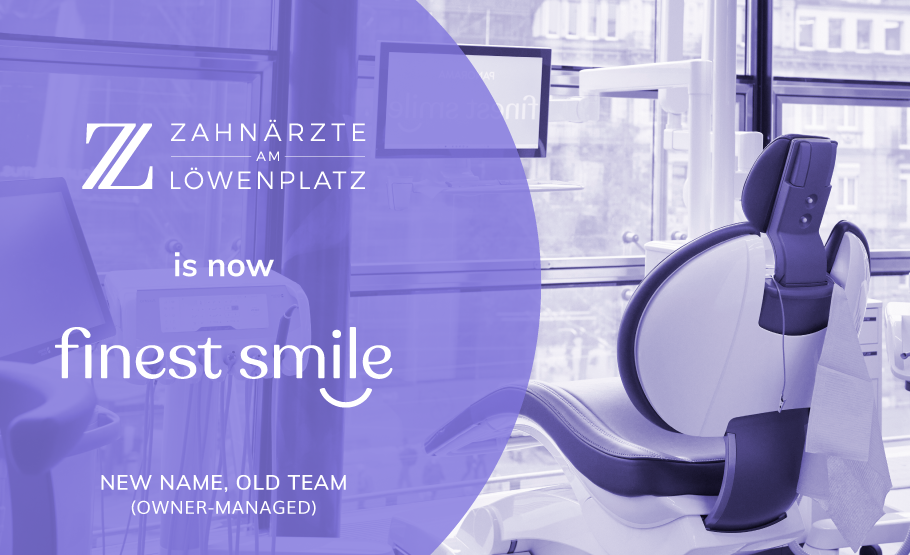
If a tooth is damaged, it can be saved and beautifully restored with appropriate treatment. Depending on the type and extent of the damage, Inlays, Onlays or Crowns may be an option. We will be happy to advise you on the various options at our dental practice in Zurich and find the best tooth replacement for you.
Frequently asked questions about Inlays and Onlays
How long do Inlays or Onlays last?
If the Inlays or Onlays are made of ceramic or gold, an average durability of around 20 years can be assumed. However, this can vary depending on the size and position of the dental restoration. And you yourself also have an influence on the lifespan of Inlays and Onlays: regular and thorough Oral hygiene, including the use of Dental floss and/or Interdental brushes for cleaning the spaces between the teeth, has a positive effect on durability.
Prevention of clenching and grinding your teeth is also essential for a good long term outcome.
What material can Inlays or Onlays be made of?
Inlays used to be made of gold. Even today, gold is still a frequently used material for Inlays. However, they are not popular with everyone because of their metallic looks. Many patients prefer more natural-looking non-metal alloys (composite) and ceramics.
What is the difference between Inlays and Onlays?
Inlays are dental fillings that are precisely made to fit the tooth to be filled and then carefully inserted into it by your dentist in Zurich. Inlays are not sufficient for more extensive damage. In this case, so-called Onlays (also known as overlay fillings) are used, which can cover a larger area of the tooth surface. If they even cover several tooth cusps, they are referred to as dome fillings. Onlays are characterized by the covering of tooth cusps in common with partial crowns.
Can dentures be associated with side effects?
Inlays and Onlays are considered to be very low-risk and safe treatment options for carious tooth decay or broken teeth. In rare cases, some patients report a slightly higher sensitivity on the affected tooth immediately after use, but this disappears on its own after a short time. Material-specific side effects are not to be expected.
Can I eat and drink normally despite Inlays or Onlays?
Yes, just wait about 3-4 hours immediately after inserting the filling before you eat anything. After that, the adhesive has completely hardened so that the filling and tooth fit together perfectly and no food residue, no matter how small, can get in between.
Another aspect is to better wait a little after the treatment so that you don`t bite yourself while local anesthetics are still working.
Your advantages of Inlays and Onlays in our practice

- 20 years+ of dental experience
- Modern clinic with air conditioning
- Comfortable state of the art dental treatment chairs with massage function
- 2D/3D Xrays for precice diagnostics and low radiation
- Enjoy your favorite Netflix program during treatment
- High-quality composite & ceramic materials with a long durability
- Inlays and Onlays are adapted precisely to the individual dental situation
Who are Inlays and Onlays suitable for?
Inlays and Onlays are suitable for filling medium to large areas of damage teeth caused by Caries, for example. If the carious area is too large to be treated with a smaller composite filling, the tooth can often only be saved with a rigid filling (Ceramic inlay or onlay). Whether an inlay or an onlay is the better option depends on the location and extent of the tooth damage. We can show you your situation by intraoral scans and intraoral photos.
We will be happy to advise you on this in a personal consultation at our dental practice Zahnärzte am Löwenplatz.

How are Inlays and Onlays inserted?
The insertion of Inlays and Onlays is very similar: first we remove the decayed tooth structure. Then we prepare the tooth for the insertion of the filling. To do this, we clean the cavity that was created when the caries was removed and straighten it.
As your dentist in Zurich, we attach great importance to high-quality workmanship and careful adaptation of the Inlays/Onlays to the tooth shape, which is tailored to the patient's individual bite. The prerequisite for this is a precise digital impression of the relevant area. Based on this, the dental laboratory produces the appropriate inlay/onlay, which we insert into the tooth in the next session. Alternatively we can produce ceramic inlays and onlays “in house” with our CAD CAM system. The CEREC primescan and primemill.
It is important that the filling fits well into the tooth, is perfectly harmonious with the tooth structure and matches the bite. With before and after intraoral photos we will show our patients the magnificent results.
What needs to be considered after treatment?
In general, there are no special aftercare procedures to consider after treatment. However, refrain from eating for the first 3-4 hours after the Filling, Inlay or Onlay has been placed. In rare cases, tiny pieces of food may get stuck between the uncured adhesive and the inlay. These could prevent an optimal fit and, in the worst case, cause Caries to reappear.
Contact us
Zahnärzte am Löwenplatz
Seidengasse 20
8001 Zürich
Opening times
Monday - Friday: 7:00 am to 8:00 pm
NEW!
Zahnärzte am Löwenplatz Panorama
Seidengasse 20
8001 Zürich
on the third floor, elevator available.










